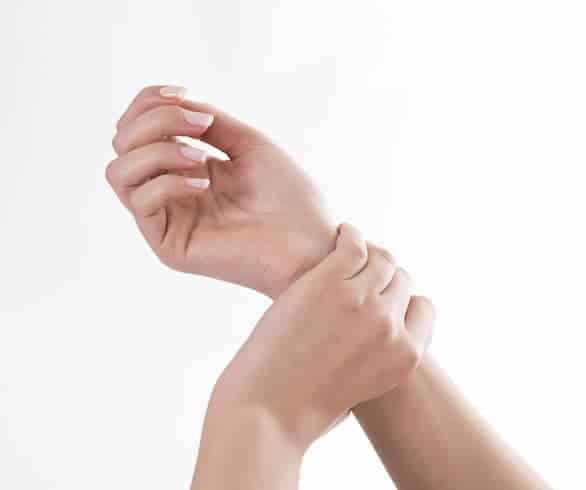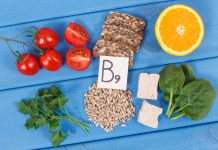
BY CORRINA MOSCA
REVIEWED BY SUHANI SHAH, BASC, ND
Rheumatoid arthritis (RA) is a form of autoimmune disease in which the body’s immune system mistakenly attacks the joints. According to the Arthritis Society, this ailment affects one in every 100 adult Canadians (about 300,000 people in total). Additionally, it affects women two to three times more often than men, and can strike at any age.
When the immune system attacks the joints, the inner surface of the synovial joint capsule, which is made of connective tissue called the synovium or synovial membrane, becomes inflamed and thick, resulting in intense stiffness, swelling and pain. If this inflammation goes unresolved, the cartilage surrounding the joints—as well as the bones themselves—may become damaged. Over time, the cartilage also becomes thinner, which causes the bones to rub against each other, generating pain, creating a loss of motion at the joint (stiffness), and causing the bones to lose their normal shape. This can lead to joint deformity, a serious and irreversible condition.
Most commonly, RA occurs in the hands, elbows, wrists, feet, knees, and ankles. Often, the effects are symmetrical, meaning that the same joints on each side of the body are usually affected. It can also involve other bodily organs, including the nerves, eyes, lungs and heart.
Research has shown that people with a specific genetic marker, known as a subset of the HLA shared epitope, have a greater chance of developing RA than those without it. This is because the HLA genetic site controls immune responses. Other bodily factors, including female hormones, obesity, and the body’s response to stressful events, may also trigger the development of RA. Environmental factors may also have an e ect on this ailment, including exposure to cigarette smoke, air pollution and insecticides.
While RA’s symptoms vary widely from patient to patient, early signs of the disease include feeling unwell or tired, soreness in or around the joints, low-grade fever, poor appetite, and weight loss. The progression of RA also varies: while some patients may experience the slow advancement of symptoms, others report rapid escalation.
When it comes to the management of rheumatoid arthritis, therapy is extremely important. This can include physiotherapy, occupational therapy, physical activity, healthy eating, and relaxation techniques. Heat and cold therapy are also excellent in helping to reduce inflammation, pain, and stiffness.
Some medications are available to help treat the different facets of RA. Nonsteroidal anti-inflammatory drugs (NSAIDs) like ibuprofen, ketoprofen and naproxen are often applied to the skin or taken by mouth to aid with pain management. Corticosteroids, including prednisone, prednisolone and methyprednisolone are also used to keep inflammation under control. However, these have serious side effects, and are often avoided by doctors. Disease-modifying antirheumatic drugs (DMARDs) are available as well to those with rheumatoid arthritis, and work to reduce joint damage and preserve the structure of the joint. Joint replacement surgery is another important option for those with limited mobility or extreme pain due to RA.
Studies have shown that safer, more natural options are also available to aid in the management of RA symptoms. You may want to consult a naturopathic doctor or other healthcare provider to ensure there are not any interactions with any medications you are taking.
CAT’S CLAW – MINIMUM 100MG
Also known as Uncaria tomentosa, this woody vine is native to the tropical jungles of South and Central America. Most often, the bark and root are used to treat the symptoms of osteoarthritis and rheumatoid arthritis due to their anti-inflammatory properties.
Cat’s Claw is also used for various disorders of the digestive system, including inflammation, diverticulitis, colitis, gastritis, stomach ulcers and leaky gut syndrome. Some also use it for shingles, cold sores, and wound healing, as it helps fight infection and stimulates the immune system.
This plant works to stimulate the immune system and fight inflammation through its antioxidants and TNF alpha inhibiting abilities (Hardin, 2007).
EVIDENCE
One randomized, double-blind study found that a plant extract containing pentacylic oxindole alkaloids of cat’s claw was beneficial to patients with RA (Mur et al., 2002). Specifically, they found that after 24 weeks of treatment with this extract, the patients experienced a reduction in their number of painful and swollen joints. The dose of cat’s claw was unknown.
Another study looked at using 100mg of freeze-dried cat’s claw for four weeks as a potential treatment for osteoarthritis of the knee (Piscoya et al., 2001). Researchers studied 45 patients with this affliction, finding that the plant had effective anti-inflammatory and antioxidant effects and reduced pain in people with osteoarthritis. While this study focused on osteoarthritis rather than RA, its implications can still be important to the treatment of this disease, as painful inflammation is also a main facet of rheumatoid arthritis.
GINGER – UP TO 500MG DAILY
The rhizome of this flowering plant has been widely used as a folk medicine throughout history. Most commonly, ginger is used to treat various gastrointestinal issues, including motion sickness, colic, nausea, gas, diarrhea, and irritable bowel syndrome. It is also used as a pain reliever for rheumatoid arthritis and osteoarthritis.
Take precautions when consuming ginger with various blood thinning drugs, as ginger has been found to slow blood clotting. When used with phenprocoumon or Warfarin—drugs that also slow clotting—it may increase chances of bruising and bleeding.
EVIDENCE
One study looked at the effects of ginger on human synoviocytes, specialized cells found inside the synovium. Researchers incubated human synoviocytes with 100 microg/ml of a combination ginger extract, and found that ginger could be useful for suppressing arthritis-related inflammation through suppressing the production of pro-inflammatory cytokines (Phan et al., 2005).
Another group of researchers compared ginger directly to ibuprofen, an NSAID. According to these scientists, ginger and ibuprofen both show similar anti-inflammatory properties (Haghighi et al., 2005). In turn, this indicated that ginger could be a potential therapy in healing inflammation associated with RA.
CAPSAICIN – STANDARDIZED TO 0.025-0.05 PER CENT CAPSAICIN CREAM
Found in various hot peppers, capsaicin is the agent that makes these plants spicy. It can be consumed raw, cooked, or dried, and is also available as a dietary supplement and in topical creams.
When taken orally, capsaicin acts as an antioxidant, protecting the cells from free radicals. When used topically, this substance helps to relieve pain by decreasing the intensity of pain signals in the body through depleting substance P.
Often, it is used to treat pain disorders, issues with the nervous system, headaches, osteoarthritis, and rheumatoid arthritis.
EVIDENCE
In a double-blind, randomized study, 70 patients with osteoarthritis and 31 with rheumatoid arthritis were given a topical capsaicin treatment (0.025 per cent capsaicin cream) or a placebo to apply four times a day for four weeks (Deal et al., 1991). At the end of the trial, RA patients found a 57 per cent reduction of pain with the capsaicin cream, demonstrating that capsaicin is a safe and effective topical treatment for arthritis.
A 2010 study out of Germany also found capsaicin to be an effective treatment for RA. Patients were given a cream containing 0.05 per cent capsaicin to apply daily for three weeks (Chrubasik et al., 2010). After this period, patients found that their pain decreased by 50 per cent.










